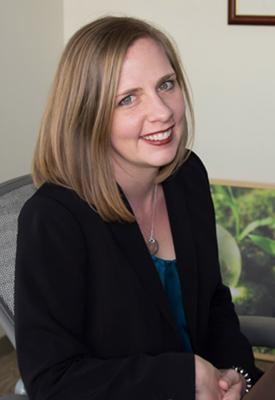Meet EPA Scientist Sherri Hunt, Ph.D.

Dr. Sherri Hunt is the Principal Associate National Program Director for Air and Energy (ACE) in the Office of Research and Development (ORD). She continues to publish articles in peer-reviewed journals and recently was a co-editor for a book on Multiphase Chemistry in the Atmosphere. After working for several years as the Air and Energy Matrix Interface in EPA Science To Achieve Results grant program, Sherri spent a year on an interagency detail as a Program Director at the National Science Foundation. Prior to her current position, she worked as the coordinator for the Science and Technology Policy Council. While working in the STAR program, Sherri was a project officer on over 60 grants, led writing teams for over dozen solicitations, and coordinated the Air, Climate, and Energy Centers for the A&E program.
How does your science matter?
In my current role, I support the National Program Director in a variety of activities to plan, coordinate, and communicate the research of the A-E research program. This involves seeking input and balancing priorities from Program and Regional offices, monitoring progress of research projects, and identifying opportunities to leverage and integrate activities and to engage with groups that may use our research results. I also interact with scientists, both in and outside EPA, to stay knowledgeable about the latest advances and pressing research questions. This job involved synthesis and translation of research results, rather than doing experiments on my own.
Previously, I led the team managing the outside research piece of A-E by working across EPA to identify research that is of interest and necessity to regions, partners, and the public. Whether planning research outside or within EPA, I continue to ask questions and support work to find the answers that will help to address air quality challenges.
If you could have dinner with any scientist, past or present, who would you choose and what would you ask them?
This is a hard question for me to answer because there are so many scientists out there whom I want to sit down and talk with! In my job, I meet and interact with such a wide variety of scientists, each with their own expertise, so I couldn’t possibly single one out. I haven’t met a scientist that didn’t have something interesting to say.
What do you like most about your research?
Rather than doing my own research, I am planning, supporting, translating, and communicating the work of the scientists within the program. I like being able to bring bits of different projects together and acting as a bridge. This may involve bring together efforts across disciplines or different offices. For me, this feels like a way of helping to solve problems.
Tell us about your background.
I received my bachelor’s degree in chemistry from the University of Georgia where I was encouraged by fabulous mentors to continue with my scientific education. I then went to the University of Minnesota for my doctorate in physical chemistry. My thesis involved determining the bond distances and angles of small acid-base complexes in the gas phase.
While in the lab, I read an atmospheric chemistry book by Dr. Barbara Finlayson-Pitts who gave a talk on campus. Because I was super impressed, I contacted her and was thrilled to be able to do postdoctoral research in her group at the University of California, Irvine. While there I conducted aerosol chamber studies to understand the chemistry of sodium bromide particles, which are a component of sea salt particles. The reactions that occur within and on the surface of these particles impact air quality in places like Los Angeles. This work enabled me to learn about atmospheric chemistry, air quality, and air quality modeling.
I came to EPA as a Science and Technology Policy Fellow through a program coordinated at the American Association for the Advancement of Science. During this time, I realized that planning and translating research was a better fit for me than working in a research lab. Fortunately, I was able to join the Agency in a full-time position following the fellowship.
When did you first know you wanted to be scientist?
When I started college, I was a double major in math and music. I discovered that those areas didn’t really fit me as well as I thought, and I was more interested in how things interacted in the body. This led me to consider pharmacy for a bit, but it was the chemistry part of pharmacy that I loved. I realized that I had been asking questions and exploring how things worked throughout my life. The variety of scientific questions means that I have endless problems that I can try to solve. Fortunately, I had great mentors to interact with along the way who helped me pave my future educational and career paths.
If you were not a scientist, what would you be doing?
I would like to have a small booth at a Farmer’s Market selling fresh vegetables from my garden or my abstract paintings, which recently have become a creative addiction.
Any advice for students considering a career in science?
The mentors you have along the way are important, and you should seek them out at multiple levels. You need senior mentors as well as those that are only a year or two ahead of you. Each person's expertise is slightly different and can be helpful in determining what is the best fit for you. Since it’s difficult to know what you think about something without experiencing it yourself, always keep an open mind!
Editor's Note: The opinions expressed herein are those of the researcher alone. EPA does not endorse the opinions or positions expressed.
